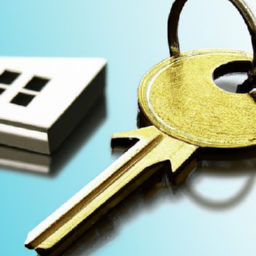Get all the information you need about the "Clear to Close" process in the real estate industry. Understand its importance, the required documentation, common delays, and tips to expedite the process.
Multifamily Refinance : Unlocking Opportunities for Success
Are you a real estate investor looking for ways to grow your multifamily investment by refinancing your multifamily property or portfolio or increase the value of your current multifamily property? Refinancing could be the answer you’re looking for. Refinancing a multifamily property can provide numerous benefits, such as lowering interest rates, pulling cash out as equity from the property, and providing cash-out refinancing for rehab funds. In this guide, we’ll take you through the reasons why you should consider refinancing your multifamily investment property or property, the different refinancing programs available, and the steps involved in the refinancing process.
Refinancing Multifamily Properties
When it comes to real estate and other multifamily property investments, refinancing multifamily properties can offer significant advantages. Let’s explore the concept of refinancing multifamily properties and how it can help you optimize your multifamily home and multifamily investment property portfolio.
Reasons to Refinance a Multifamily Property
Lower Interest Rates
Refinancing a multifamily property can help you secure more financing at a lower interest rate. This more competitive, fixed interest rate and rates could translate to significant savings over the life of your loan and improve the refinancing your multifamily property’s cash flow, value and profitability.
Pull Out Your Equity in the Property
Refinancing also allows you to pull cash out of equity from the property. By refinancing, you can increase cash flow, the down payment, reduce the monthly mortgage payment, consolidate debt, and cash out the down payment, and free up cash for other investments.
Cash-Out Refinance for Rehab Funds
Another reason to refinance is to fund property improvements. By using the cash-out refinance option, you can access equity, improve your property and increase its value, or use the funds to make other investments.
Reduced Interest Rates: One of the primary benefits of refinancing multifamily properties is the potential for reduced interest rates. By refinancing at a lower rate, you can significantly decrease your monthly mortgage payments, freeing up funds for other investments or expenses.
Improved Cash Flow: Lowering your interest rates through refinancing can lead to improved cash flow. With reduced mortgage payments, you’ll have more income available to allocate towards property maintenance, upgrades, or even expanding your real estate portfolio.
Access to Equity: Refinancing multifamily properties provides an opportunity to tap into the equity you have built over time. By borrowing against this equity, you can secure additional capital to fund new investments or make necessary improvements to existing properties.
Multifamily Refinancing Programs
Fannie Mae Choice Refinance program
HUD Multifamily Refinancing Programs
HUD offers several various loan refinancing programs to help real estate investors improve their multifamily properties. The programs are designed to make the refinancing process for multifamily loans easier while offering attractive terms and competitive interest rates.
Private Lender Refinancing Options
There are many private lender refinancing options available that offer financing, to real estate investors seeking to refinance their multifamily properties. It’s essential to evaluate all your financing options, and choose the best lender with favorable loan terms that meet your investment objectives.
Refinancing Process
Initial Evaluation of the Property
Before applying for refinancing, it’s essential to evaluate the property and determine if refinancing makes sense or not. You should consider the property location, current market trends competitive rates, and the loan terms potential ROI.
Required Documentation
The refinancing lender typically requires various documentation, such as financial statements, bank statements, rent rolls, and other relevant documents that demonstrate the property’s value and revenue.
Appraisal Process
Refinancing requires an appraisal of the multifamily property to determine its current value. The appraisal is usually performed by a licensed appraiser and is used to calculate the loan-to-value (LTV) ratio.
Closing Costs and Fees
Refinancing a multifamily property involves various closing costs and fees, such as: property appraisal fees new loan amount, legal fees, and other expenses. It’s essential property owners to understand these financing costs to avoid any surprises during the financing process.
Timeline for a Successful Refinancing Process
The refinancing process typically takes 60 to 90 days to complete. However, the timeline to refinance loan varies depending on several factors for bank loans, such as the lender’s underwriting process current loan amount, the property’s complexity, and the availability of required documents.
How to Determine If Refinancing Makes Sense
Strategy Analysis and Decision Making
Real estate investors should perform a strategy analysis that takes into account their long-term holding goals, property types, location, current market trends, and potential ROI. This can help them make an informed decision on whether refinancing makes sense.
Risk Analysis and Performing Due Diligence
It’s essential to perform a risk analysis and due diligence by researching the investment property itself’s market value, its current cash flow, and potential risks relating to ownership costs, property expenses, and location.
Estimated ROI Analysis
Investors should calculate the fixed rate, loan term potential ROI for refinancing, factoring in the estimated closing costs and fees, lower interest rate to determine if refinancing makes sense financially.
Preparing the Property for Refinancing
Conducting Due Diligence on the Property
Conduct necessary due diligence on the multifamily property and owners of the multifamily property and ensure that all required documents are in order. This helps reduce the risk of costly surprises arising during the refinancing process.
Making Necessary Repairs and Upgrades
Investors property owners of apartment property should ensure that the property is up to code, realize potential cost savings by making energy-efficient modifications, and improving the value of the property types curb appeal and amenity offerings to make more properties attract potential renters.
Renegotiating Leases and Improving Occupancy Rates
Real estate investors should review existing lease agreements, identify underperforming units, and pursue rent increases consistently. Renegotiating leases for new properties and improving overall occupancy rates market rate properties can help to increase cash flow and improve ROI.
FAQ
How much equity do you need to refinance a rental property?
In most cases, if you have 20% equity your rental property, lenders must have the following: Fannie Mae guidelines require 15% cash for refinancing investment homes, but most lenders default on 20%.
Is it possible to refinance investment property?
You can reinvest the property as much as redevelop your home. In a refinance process, you the investor may get a reduced repayment rate or change the other loan financing terms further. You can borrow money from accumulated equity by cashout refinanncing loans or buying equities.
Can I refinance multiple properties?
The good news is that the majority of banks will not issue any issues for resizing multiple homes at the same time based on their loan to value ratio total number property types of mortgages. The problem comes at a disadvantage. Underwriters will examine the bank loans whole portfolio of loans when underwriting your loan.


